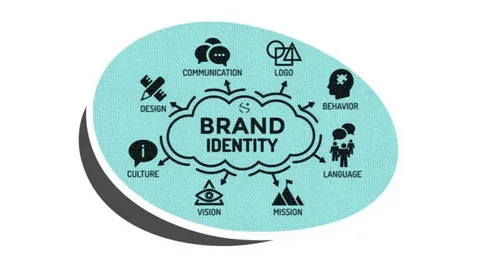Have you ever wondered what makes some coffee shop business flourish while others struggle to stay afloat? Running a successful coffee business isn’t just about serving great coffee—it’s about building strong customer relationships, optimizing operations, and leveraging smart marketing strategies. In a competitive industry, standing out requires more than just a good brew; it demands a well-rounded business approach that ensures steady growth and profitability.
To become the champion of the coffee business, you need a blueprint that covers branding, diversified revenue streams, operational efficiency, and customer loyalty. This guide will help you unlock the key strategies for running a profitable coffee business. Whether you’re starting from scratch or looking to scale, these insights will ensure that your coffee shop business becomes a community favorite and a financial success.
1. Crafting a Strong Brand Identity

Your brand is more than just a logo—it’s the personality and experience you offer to customers. A strong brand creates customer loyalty and helps differentiate you from competitors.
Develop a Unique Selling Proposition (USP)
Determine what sets your coffee shop business apart. It could be single-origin beans, a zero-waste initiative, or a signature drink that customers can’t find anywhere else.
Example: Blue Bottle Coffee built its reputation by focusing on fresh, high-quality coffee and a minimalist aesthetic that appeals to modern consumers. By emphasizing quality and sustainability, they created a brand that resonates with coffee lovers worldwide.
Create a Memorable Experience
The ambiance, customer service, and visual appeal of your shop contribute to brand identity. A welcoming, aesthetically pleasing space encourages repeat visits and word-of-mouth marketing.
Example: Café de Flore in Paris is iconic for its vintage charm and celebrity clientele, creating an unforgettable atmosphere for visitors. Their historic appeal and consistent service have made them a landmark in the coffee world.
2. Expanding Revenue Streams
Relying solely on in-store coffee sales can be limiting. Diversifying income sources enhances stability and growth, helping you build a sustainable business model.
Sell Branded Merchandise
Offering branded mugs, T-shirts, and reusable tumblers increases brand visibility and provides additional income. Customers love to take home souvenirs that remind them of their favorite coffee shop.
Example: Starbucks generates billions annually from branded merchandise, reinforcing its brand globally. Many independent coffee shops have followed suit, launching their own merchandise lines to increase revenue.
Introduce Subscription Services
Provide customers with a convenient way to enjoy your coffee at home through a subscription model. Freshly roasted beans delivered to their doorstep ensure consistent engagement with your brand.
Example: Trade Coffee personalizes coffee subscriptions, ensuring steady revenue and customer retention. Subscribers receive curated selections based on their taste preferences, keeping them engaged and loyal.
Host Community Events
Engage with the local community by hosting events such as latte art workshops, poetry nights, or live music sessions. These events create an emotional connection with your brand and turn occasional customers into regulars.
Example: Verve Coffee Roasters holds regular educational coffee events, fostering deeper customer connections. This not only strengthens their brand but also educates their customers about coffee culture.
3. Implementing a Customer Loyalty Program
Loyal customers are the backbone of any successful coffee shop business. A well-structured loyalty program encourages repeat visits and higher spending.
Use Digital Loyalty Apps
Apps like GAWAPP APP make it easy for customers to earn and redeem rewards while giving businesses valuable insights into customer behavior. Digital loyalty programs streamline the process and encourage repeat visits.
Example: Dunkin’s DD Perks program has successfully increased customer engagement and return visits. Their points-based system ensures that customers keep coming back for more.
Offer Exclusive Perks
VIP programs with exclusive perks such as early access to new blends, free birthday drinks, or special discounts keep customers coming back.
Example: Many independent coffee shops offer “mug club” memberships where members receive discounts and special offers. This makes customers feel valued and part of a special community.
4. Optimizing Operational Efficiency
Efficiency reduces waste, improves service speed, and maximizes profits. By streamlining operations, you can enhance both customer experience and profitability.
Reduce Waste Through Smart Inventory Management
Use software to track stock levels and reduce spoilage. Proper inventory management ensures that you’re not over-ordering or running out of key ingredients.
Example: Stumptown Coffee Roasters implemented inventory tracking to minimize waste and optimize ordering processes. This has significantly reduced losses and improved cost efficiency.
Invest in Energy-Efficient Equipment
Energy-saving espresso machines and LED lighting cut costs while supporting sustainability efforts. Modern equipment helps reduce electricity bills and minimizes environmental impact.
Example: Many European cafés have transitioned to energy-efficient appliances, significantly lowering operating expenses. This shift aligns with growing consumer interest in eco-friendly businesses.
Train Staff for Speed and Quality
Barista training is essential to ensure quick, consistent service. A well-trained staff can improve service efficiency and boost customer satisfaction.
Example: Specialty coffee shops like Intelligentsia Coffee invest heavily in barista training, ensuring a high standard of quality and efficiency. This approach results in better customer experiences and stronger brand loyalty.
5. Leveraging Social Media and Community Engagement
A strong online presence helps attract and retain customers. Digital marketing is crucial for spreading brand awareness and driving foot traffic.
Encourage User-Generated Content
Ask customers to share photos of their coffee experiences with a branded hashtag. Feature the best photos on your social media to build engagement.
Example: Alfred Coffee in Los Angeles built a cult following through aesthetically pleasing Instagram content and influencer collaborations. Their consistent branding and customer engagement have helped them stand out in a crowded market.
Partner with Local Businesses
Collaborate with nearby bakeries, bookstores, or artists to create mutual benefits. Cross-promotions help expand your reach and attract new customers.
Example: Many coffee shops work with local pastry chefs to offer exclusive treats that draw in more customers. These partnerships enhance the overall customer experience.
Run Contests and Giveaways
Hosting social media contests, such as a free coffee for a month giveaway, can increase brand awareness and engagement. These promotions encourage more followers and higher customer interaction.
Example: Small coffee chains often run Instagram contests where customers tag friends for a chance to win a free drink, leading to increased visibility and new potential customers.
Conclusion
Sustaining a successful coffee shop business requires a combination of strategic branding, diversified income streams, operational efficiency, and customer engagement. By implementing these time-tested strategies, you can position your café for long-term success and profitability. Start refining your approach today, embrace technology like GAWAPP APP, and watch your coffee business flourish!




